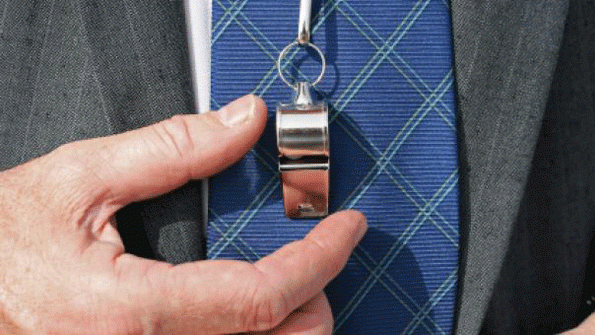 Today’s post comes from guest author Jon L Gelman LLC in New Jersey. Although Halloween comes every year, for many children, it’s important to remember that they’re more impulsive and are more likely to “forget” the rules because they’re excited for the evening’s plans. Especially if you’re working or driving on Halloween, I would add to the tips below by saying to really watch out for trick-or-treaters, regardless of the weather.
Today’s post comes from guest author Jon L Gelman LLC in New Jersey. Although Halloween comes every year, for many children, it’s important to remember that they’re more impulsive and are more likely to “forget” the rules because they’re excited for the evening’s plans. Especially if you’re working or driving on Halloween, I would add to the tips below by saying to really watch out for trick-or-treaters, regardless of the weather.
In addition, as a parent of a small child, thanks in advance to everyone who opens up their homes by giving out treats to costumed children.
Something that may be a safety tip for many children is to be mindful that different children approach Halloween differently and it’s not always obvious that a child may be having challenges. There are so many examples I can give, but one that comes to mind includes for a painfully shy child, just saying trick-or-treat and thank you at each house may be an effort in social graces. And trick-or-treaters on the autism spectrum may not be able to speak at all.
In addition, food allergies are much more prevalent. For my family, Halloween safety tips include bringing a charged cell phone, packing our Auvi-Q epinephrine shots to respond if our child were to have a reaction, and making sure he doesn’t eat anything with nuts. (Fortunately, we don’t have airborne allergies, so it is relatively safe for our son to do trick-or-treating, but we practice what he is to say and do numerous times before the actual trick-or-treating. Different parents have different comfort levels for what they’re willing to expose their children with allergies to, so we respect that, too.)
So for those kind enough to give treats, please don’t take it personally if the response from the trick-or-treater isn’t what you expected. Because in addition to the safety tips below, many families are being as safe as they can for their individual situations, and those needs aren’t readily obvious on the holiday.
Thanks in advance for the empathy and for looking out for the community’s children on one of the biggest and scariest days of the year!
Halloween traditionally infers scary and dark. Those elements, complicated by sensory limiting costumes and environment, gives rise to the need for elevated safety concerns in the workplace and at-home surrounding Halloween events.
From a fall resulting in a dislocated shoulder, to an open flame resulting in second degree burns, each year the US Consumer Product Safety Commission (CPSC) receives reports of injuries involving Halloween-related costumes, décor, and lighting. These incidents are preventable. Using CPSC’s three-step safety check (pdf), consumers can ensure that their fright night fun is not haunted by Halloween injuries
“Too often Halloween make believe has resulted in real life injury,” said CPSC Chairman Inez Tenenbaum. “Fortunately, prevention is simple. Choose flameless candles, flame-retardant materials, and well-fitting costumes to reduce the risk of injury this Halloween.”
With CPSC’s quick and easy Halloween safety check (pdf) and just five minutes of inspection, consumers can avoid problems that previously have plagued the trick-or-treat trail. This safety check will help consumers to: (1) prevent fires and burns, (2) ensure that kids can see and be seen, and (3) outfit kids for safety.
Halloween-related incidents can involve a number of hazards, including burns from flammable costumes that come into contact with open flames-particularly candles used to illuminate jack-o-lanterns; falls and abrasions from ill-fitting costumes, shoes, and accessories; and fires caused by burning candles left unattended, near combustible decorations or knocked over by kids and pets.
The federal Flammable Fabrics Act (FFA) requires costumes sold at retail to be flame-resistant. To prevent costume-related burns, CPSC enforces this requirement and recalls costumes and other products that violate the FFA. When making a costume at home, CPSC encourages consumers to use fabrics that inherently are flame resistant, such as nylon and polyester.
According to the National Fire Protection Association (NFPA), Halloween ranks among the top 5 days of the year for candle-related fires. To prevent candle fires, CPSC encourages consumers never to leave a burning candle unattended. Battery-operated flameless candles and other flameless lighting are safe alternatives to traditional candles.
Unique jack o’ lanterns and creatively-carved pumpkins are a new popular trend. Read CPSC’s OnSafety blog on pumpkin-carving injuries and how to prevent them
Additional safety tips to help make this year’s holiday safe:
Decorations
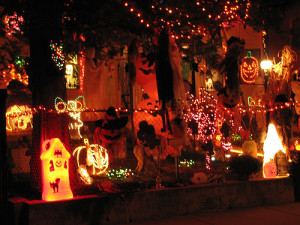 Keep candles and jack o’ lanterns away from landings and doorsteps, where costumes could brush against the flame.
Keep candles and jack o’ lanterns away from landings and doorsteps, where costumes could brush against the flame.
Remove obstacles from lawns, steps, and porches when expecting trick-or-treaters.
When indoors, keep candles and jack o’ lanterns away from curtains, decorations, and other items that could ignite. Do not leave burning candles unattended.
Whether indoors or outside, use only decorative light strands that have been tested for safety by a recognized testing laboratory. Check each set of lights, new or old, for broken or cracked sockets, frayed or bare wires, or loose connections. Discard damaged sets.
Don’t overload extension cords.
Costumes
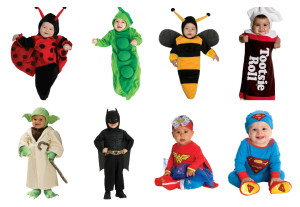
When purchasing costumes, masks, beards, and wigs, look for flame-resistant fabrics, such as nylon or polyester; or look for the label “Flame Resistant.” Flame-resistant fabrics will resist burning and should extinguish quickly. To reduce the risk of contact with candles and other fire sources, avoid costumes made with flimsy materials and outfits with big, baggy sleeves, large capes, or billowing skirts.
Purchase or make costumes that are light colored, bright, and clearly visible to motorists.
For greater visibility during dusk and darkness, decorate or trim costumes with reflective tape that will glow in the beam of a car’s headlights. Bags or sacks also should be light-colored or decorated with reflective tape. Reflective tape is usually available in hardware, bicycle, and sporting goods stores.
Children should carry flashlights to be able to see and to be seen.
To guard against trips and falls, costumes should fit well and not drag on the ground.
Children should wear well-fitting, sturdy shoes. High heels are not a good idea.
Tie hats and scarves securely to prevent them from slipping over children’s eyes and obstructing their vision.
If your child wears a mask, make sure it fits securely, provides adequate ventilation, and has holes for eyes large enough to allow full vision.
Swords, knives, and similar costume accessories should be made of soft, flexible material.
Treats
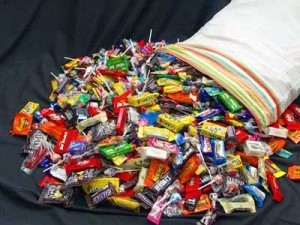 Children should not eat any treats before an adult has examined them carefully for evidence of tampering.
Children should not eat any treats before an adult has examined them carefully for evidence of tampering.
Carefully examine any toys or novelty items received by trick-or-treaters who are younger than 3 years of age. Do not allow young children to have any items that are small enough to present a choking hazard or that have small parts or components that could separate during use and present a choking hazard.

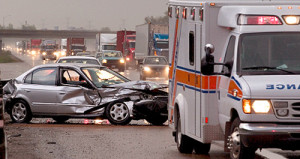 Do you drive a company vehicle as part of your job?
Do you drive a company vehicle as part of your job?


